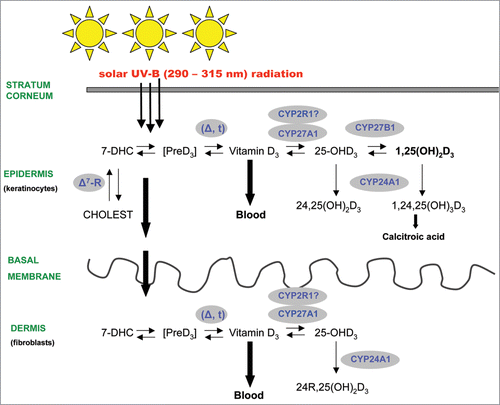Figures & data
Figure 1 Schematic illustration of the cutaneous vitamin D endocrine system in human skin. Please note that the skin represents an unique tissue in the human body’s vitamin D endocrine system, producing various vitamin D metabolites for endocrine, paracrine and autocrine signalling pathways. Importantly, vitamin D is photosynthesized in the skin (epidermis and dermis) by solar or artificial UV-B-radiation (before it is transferred to the blood for endocrine signalling to cover the body’s needs in vitamin D), and biologically active 1,25-dihydroxyvitamin D3 is synthesized in many skin cells, where it acts locally and regulates a broad variety of independent cellular functions via autocrine/paracrine pathways.
